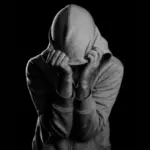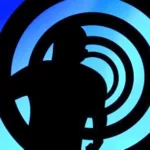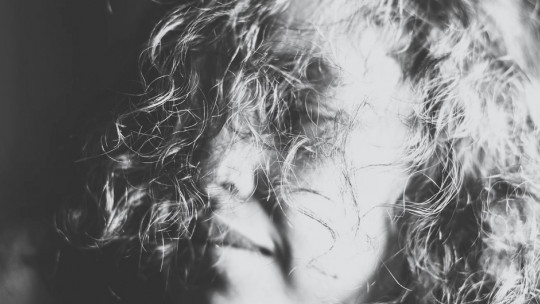
Feeling anxiety is totally normal, and people can experience it in our daily lives in multiple situations. For example, just before an exam when our nerves are on edge or when we can’t fall asleep because we have to make an important decision.
Anxiety is a normal and adaptive reaction that appears in situations of stress or uncertainty.. However, when anxiety causes functional impairment, affects different areas of our life (interpersonal relationships, work, school…) and causes great discomfort and suffering, then it may be an anxiety disorder. In this case it is necessary to go to psychological therapy.
Symptoms of anxiety disorders
Negative anxiety can manifest for different reasons, as there are different types of anxiety disorders. Some people have a great fear of speaking in public (social phobia) and, therefore**, tend to avoid situations in which they are exposed to this discomfort**.
Others have irrational, catastrophic thoughts almost daily about events that have not happened and are very unlikely to happen (generalized anxiety disorder), and others feel great discomfort when reliving a traumatic event from the past (post-traumatic stress disorder). Regardless of the type of anxiety, some characteristic symptoms of this disorder are:
Treatments for anxiety
If you think you are one of those people who suffers from an anxiety disorder, you should know that you are not alone, because this is a very common problem. Since there are different types of anxiety disorder, each one has a specific treatment.
Now, Psychologists can provide a series of techniques that help improve anxiety states.but the problem doesn’t go away if you don’t do your part. It is your responsibility to implement certain habits and strategies in your life to stop anxiety from being a problem.
If you want to know what treatments are applied in therapeutic sessions, below you can find a list of the most relevant and notable ones:
1. Relaxation techniques
Our body reacts to anxious thoughts with muscle tension and a series of physiological reactions. When an anxious person interprets a situation as threatening, the fight-flight response is activated, a series of hormones are released, and the autonomic nervous system prepares the individual to respond to a dangerous situation.
Relaxation techniques have the objective of teaching individuals to relax, learn to breathe correctly and reduce physiological activation. There are various types of relaxation techniques, for example, Jacobson’s progressive muscle relaxation technique or Schultz’s autogenic training.
2. Expository techniques
Anxiety is not a pleasant feeling, so people who suffer from this disorder try to avoid situations that cause discomfort. A very common way to do this is to remove yourself from the anxious situation or stimulus.. If someone is afraid of public speaking, they can avoid attending her best friend’s wedding to avoid giving a speech in front of everyone in attendance. If someone is afraid of flying, they may drive for days to avoid getting on a plane.
Exposure therapy, as its name suggests, consists of exposing the patient to feared situations or objects.. The idea is that through repeated exposure, the person will acquire a feeling of control over the anxiety, and the situation will tend to disappear. Expository techniques are used in cases of phobias and other anxiety disorders (for example, obsessive-compulsive disorder), and are characterized by the patient having to confront the feared stimulus until the anxiety is reduced thanks to habituation.
Thanks to this type of techniques it is possible to prevent escape or avoidance from becoming a safety response. To carry this out, a hierarchy of feared stimuli is usually established, so that the patient can gradually approach these stimuli until extinction is achieved. These types of techniques can be carried out both live and imaginary. Nowadays, thanks to new technologies, It is possible to perform these techniques through Virtual Reality. Exposure therapy can be used alone, or it can be done as part of cognitive behavioral therapy.
3. Systematic desensitization
Instead of confronting the feared situation or object immediately, treatment and exposure may begin with a situation that is only mildly threateningto work little by little until the goal. This step-by-step approach is called systematic desensitization. Systematic desensitization allows you to gradually challenge fears, build confidence, and master panic control skills.
Systematic desensitization is similar to expository techniques (and for some authors it is included within these). However, there are some differences between both treatments. While in expository techniques habituation is used to overcome anxiety, in systematic desensitization counterconditioning is used, that is, the replacement of a response that produces anxiety with another incompatible with it. In systematic desensitization the approach to the stimulus occurs gradually, but in the exposure technique the pace of approach depends on the time available, the patient’s disposition, and the rate of habituation.
Systematic desensitization includes three parts:
4. Cognitive restructuring
Cognitive restructuring is based on the idea that the way we feel, behave, and respond to situations based on our way of thinking, so this technique attempts to modify dysfunctional thought patterns and beliefs.
Cognitive restructuring derives from cognitive therapy (but is also used in cognitive behavioral therapy) which can help people identify and challenge thought patterns and beliefs that cause anxiety. The purpose of this technique is the modification of the patient’s thinking patterns thanks to different methods.
5. Pharmacological techniques
In some cases It is advisable to complement psychological treatment with pharmacological treatmentespecially in situations where it is necessary to reduce symptoms quickly, such as to treat a panic attack.
However, medications must be combined with different cognitive and behavioral techniques and must be replaced little by little by them. Drugs can create addiction and intolerance, so it is necessary to be cautious in their consumption and self-medication should be avoided. Two types of drugs are commonly used in the treatment of anxiety: anxiolytics and antidepressants.
6. Mindfulness
Mindfulness belongs to third generation psychological therapies. One of the programs most used for the treatment of anxiety disorders is MBCT (Mindfulness-based cognitive therapy) or Mindfulness-based Cognitive Therapy. The program combines meditation with the acquisition of practical skills that characterize cognitive therapysuch as the interruption of thought patterns that lead to anxious symptoms.
Mindfulness, more than a set of techniques, is a philosophy that focuses on self-acceptance, compassion, focusing attention on the here and now, and adopting a non-judgmental mentality. It is based on the idea that it is not the events that cause anxiety, but how we interpret them and how we cope with them. It is not about eliminating anxiety but about accepting it, because by not resisting, the anxious symptoms are reduced.
Go to psychotherapy, the best option to overcome anxiety
When it comes to treating anxiety disorders, science shows that psychotherapy is generally the most effective option. The therapy helps the patient discover the underlying causes of her worries and fears; It allows you to learn to relax and look at situations from a new perspective, and gives you the opportunity to develop better coping and problem-solving skills. Therapy provides the tools to overcome anxiety and teaches how to use them.
The duration of treatment will depend on the type and severity of the anxiety disorder. However, many anxiety therapies are relatively short, because the vast majority of people improve after 8-10 therapeutic sessions.








